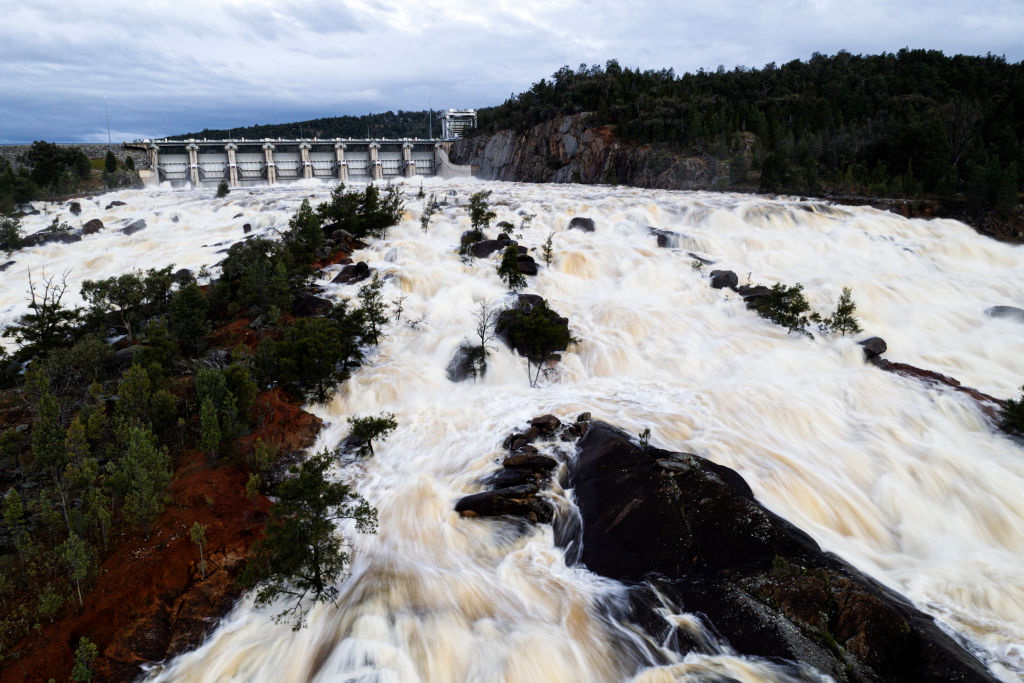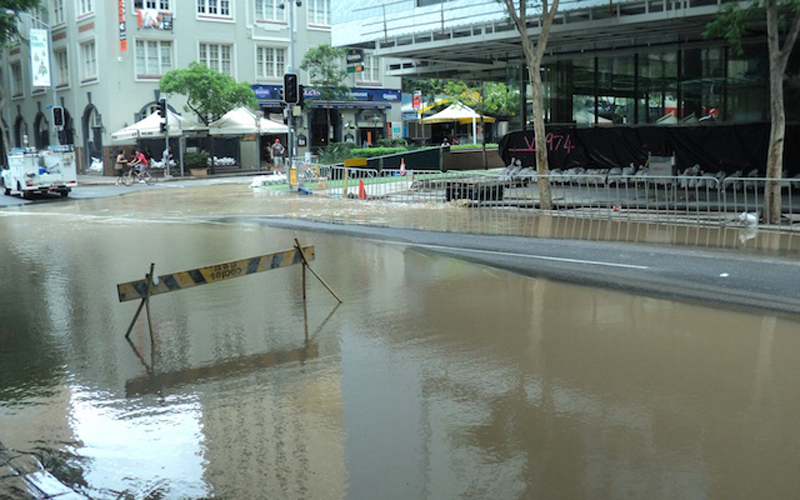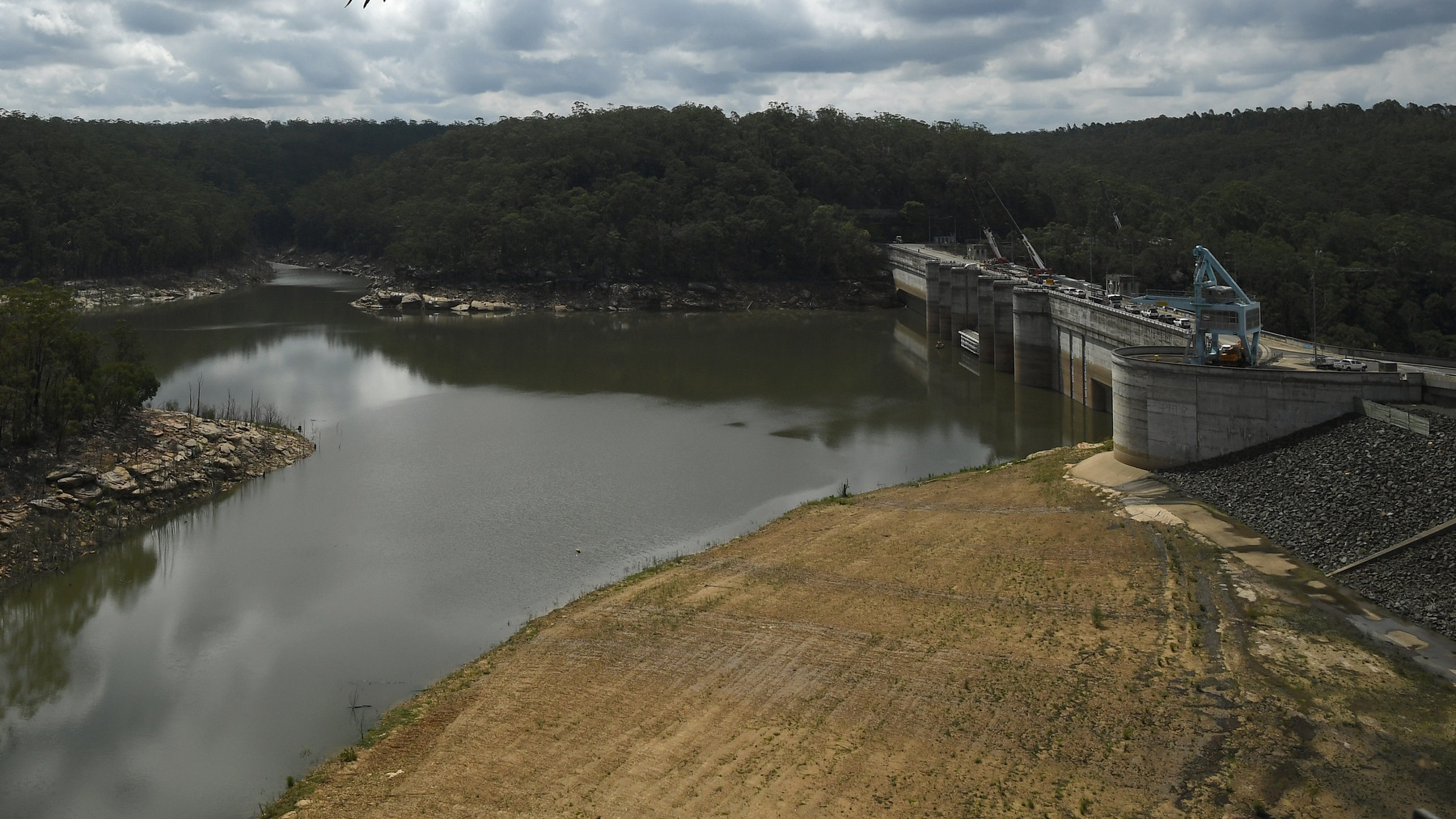KEY POINTS
- Modelling used to plan infrastructure like dams is out-of-date, study shows.
- Maximum possible rainfall in Australia could increase by up to 38 per cent within 80 years.
- More properties will be at risk of flooding with experts warning against building on flood plains.
Modelling used to plan infrastructure such as dams is increasingly outdated, with experts finding that maximum possible rainfall in Australia could increase by up to 38 per cent within 80 years.
Many Australians have been shocked by dramatic footage of a dam overflowing in central west NSW this week as , but this could become a more common occurrence.
Research commissioned by 10 dam owners and water providers, which will be published in the peer-reviewed journal Water Resources Research, found the risk of dam over-topping events would rise significantly due to climate change - putting more properties at risk of flooding.
Lead author Johan Visser of the University of NSW’s Water Research Laboratory said engineers designed dams to accommodate the largest flood event that was reasonably expected to occur, using the Probable Maximum Precipitation (PMP) level. This figure estimates the greatest depth of rainfall possible over a certain period of time, and is used to calculate the Probable Maximum Flood (PMF) level.
"The problem is that PMP calculation is based solely on historical data with no consideration for future climate conditions," Mr Visser said.
"This means that many large dams constructed decades ago were designed using information representative of a cooler climate."

A view down stream from the Wyangala Dam in NSW as it spills after reaching 104 per cent capacity on 15 November. Source: Getty / Brook Mitchell
"This would be a significant issue for dam owners to deal with," Professor Nathan said.
Even if global warming was limited to the best-case scenario of 1.5C, which the , rainfall estimates would still increase by around 15 per cent.
Professor Nathan said the increased rainfall would mean dams would be more likely to over-top and spillways may become too small, meaning the height of dams may need to be increased.
"But it's very costly and difficult to do this," he said.
He said it was not clear how many properties would be impacted by the increased rainfall but said it would impact downstream communities, as well as homes built on flood plains.
"Floods will become more severe and more frequent," he said.
"Big floods are going to get bigger and therefore any community that's currently vulnerable to flooding, the risks of them experiencing future floods in the future can only increase."
Floods will become more severe and more frequentProfessor Rory Nathan
Even homes built high on floodplains, which would not usually get flooded, could also be impacted. This already seems to be happening in places such as Lismore in NSW, where properties that had never previously been flooded were inundated this year.
The researchers say existing rainfall modelling has not been updated for at least 20 years and recent weather events show storms are already getting more intense and frequent.
"Anybody who is planning to build a large dam needs to think 50 to 100 years ahead, and this research makes clear that future planning now needs to consider the future impacts of climate change on the plausible upper limit of rainfall extremes," corresponding author of the paper Professor Ashish Sharma of UNSW said.

Lismore houses surrounded by floodwater in late March. Source: Getty / Dan Peled
What can we do to protect properties from flooding?
Professor Nathan said it was important to remember that probable maximum flood events were "exceedingly rare" with a "one-in-one-million chance" of occurring in a year.
"So you're as likely to win the lottery as you are to experience one of these events," he said.
"So we need to be careful when we're spending money, that we do it in a sensible way."
Professor Nathan said the floods many Australians were experiencing this year were much more likely to happen again, than a probable maximum event.
But he said if they did happen, the consequences would be very great and so they required attention and thought.
The 2011 Brisbane River flood was thought to have cost the local government more than $100 million, after the .

The Brisbane flood in 2011 was devastating and is estimated to have cost the local government more than $100 million.
"Certainly if I was to spend a dollar on anything, it would be on reducing our carbon emissions," Professor Nathan said.
He said Australians may also have to learn to live with floods, because they were not going to go away.
"We should stop being taken by surprise when they occur," he said.
Certainly if I was to spend a dollar on anything, it would be on reducing our carbon emissionsProfessor Rory Nathan
"I think if people prepared for flooding in the same way [that you] prepared for bushfire, you're more likely to develop some resilience and take action in a way that has less devastating consequences," he said.
"There's a range of things we can do, basically, other than just building bigger dams or building higher levees."
This may include improving warning systems and having a better understanding of vulnerable areas, and preparing homes to better withstand flooding when it does occur.
Professor Nathan said it may also mean moving some houses out of extreme risk areas where it's not possible to protect them.

Building bigger dams is not always the best solution to flooding risks. Pictured is Warragamba Dam in Sydney. Source: AAP
While the building of dams or building levees did help to protect communities, Professor Nathan said ultimately it made things worse.
"Because at some point, the capacity of those structures are exceeded, and therefore the consequences will be worse," he said. "[Dams] will always have a finite capacity."



